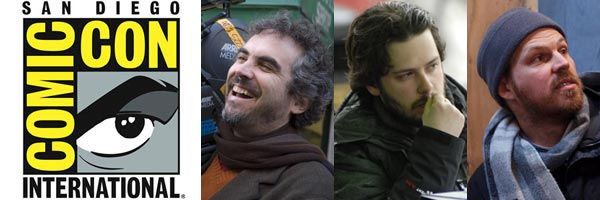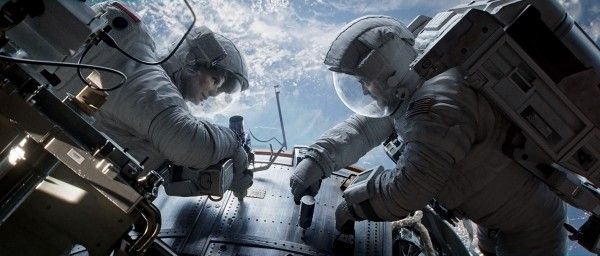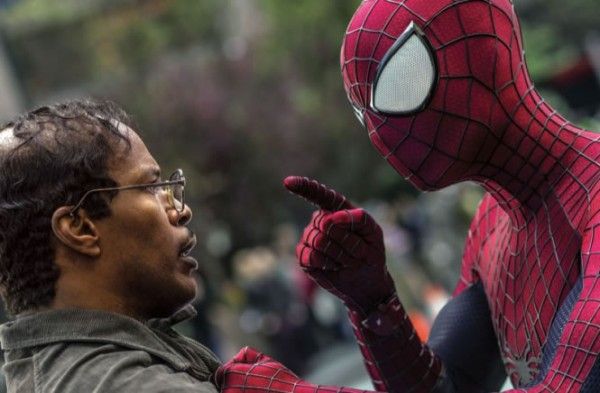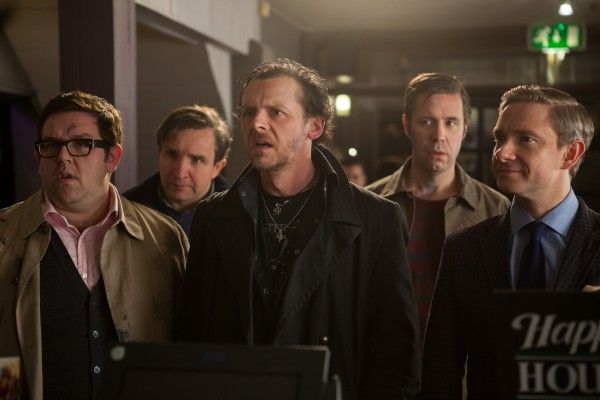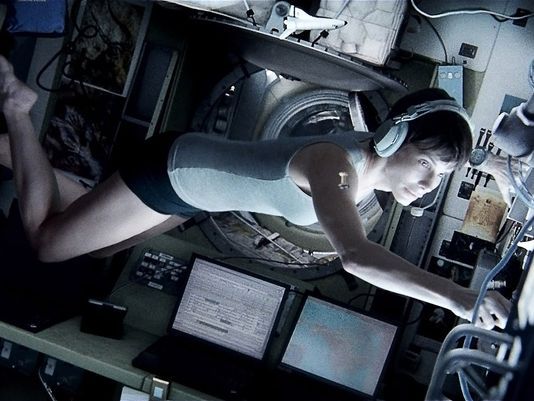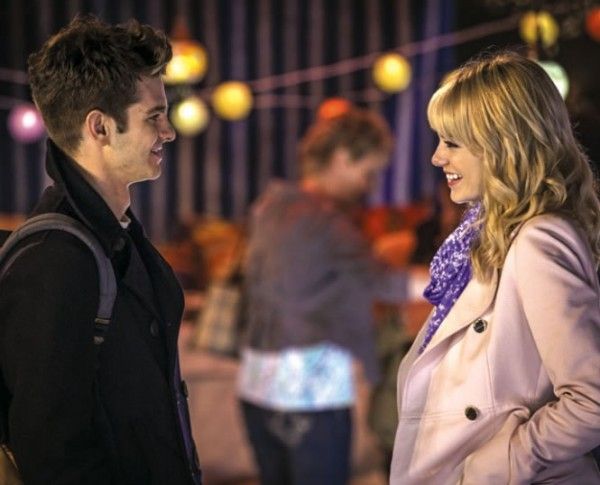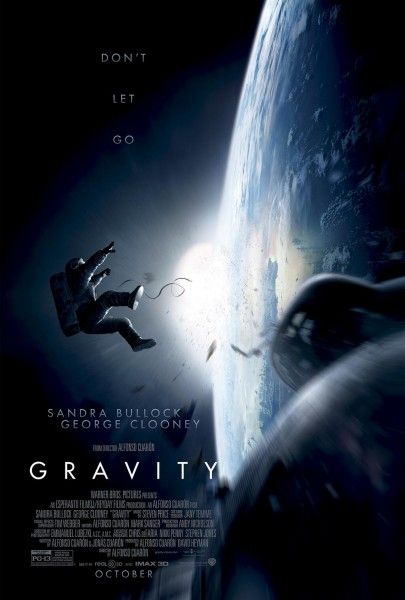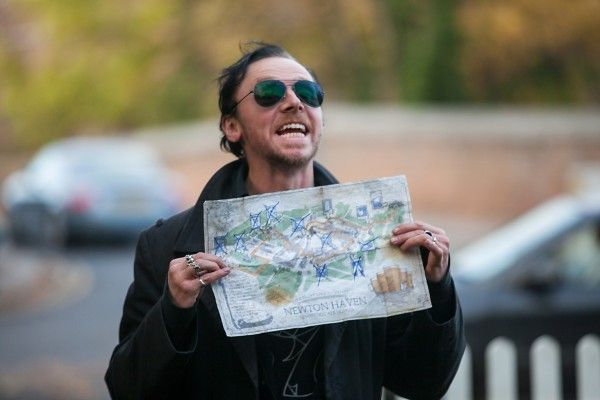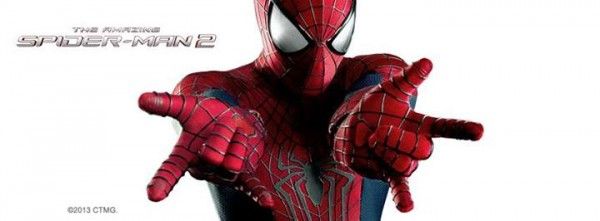“The Visionaries” panel with Alfonso Cuaron, Marc Webb, and Edgar Wright was one of my must-see events of Comic-Con, and it didn’t disappoint. They’re all exciting filmmakers who have distinct personalities that make you feel like you’re watching a personal vision rather than just a generic product. Cuaron’s Gravity and Wright’s The World’s End look incredible, and judging on the glut of images we’ve seen from Webb’s The Amazing Spider-Man 2, the sequel could be a vast improvement over the first film. The directors are also great public speakers who can provide funny, thoughtful answers to the questions they were asked, and then build off each other’s comments.
During the hour-long panel, they covered a wide array of topics, particularly a lengthy discussion on long takes, which led into their thoughts on spontaneity and playing to savvy audiences that can appreciate the technical craft of their work, but also how the difficulty of long takes benefits everyone on the cast and crew as well. They also gave their thoughts on 3D, mentorship, briefly touched on what they have coming up or what they’d like to do next (Cuaron wants to make a horror film), and much more. Hit the jump for a recap.
Something in their new film that excited them to make real:
- Wright: Using trojan horses to make relationship comedies. The bittersweet experience of reconnecting with old friends. “Taking something from our lives and adding maximum devastation.”
- Webb: Taking personal relationships and putting them in something massive and extreme. At the end of the day, the relationship stuff is what he enjoys the most. To do something small and intimate in the midst of the “maximum devastation”
- Cuaron: The idea of “one single human floating in space, completely alone”. Take that character and turn that into a suspenseful, action film with minimal elements.
Did Cuaron run into any technical problems:
- “The whole film was a big miscalculation.” Thought he could shoot in one year, and for the next four years his cinematographer reminded him of that miscalculation. One of the problems was trying to get the technology in trying to remove gravity and also get the characters spinning on multiple axis. They tried using the “vomit comet” (parabolic flight), but the problem is that you’re limited to the space of the plane and it only lasts for 20 seconds. And this film requires extended takes.
- Each segment required different technology, but the core of it was robotics. They used the robots to build cars and had them control lights and cameras. Had Bullock work in a 9x9 cube wearing a contraption and then moved the room around her.
- There was a competition between George Clooney and Sandra Bullock to impersonate his accent. “Who was better?” asked the moderator. “They both sucked! They played me as a Cuban, not a Mexican.”
Marc Webb on trying to handle Spidey’s movement:
- On the first movie they built massive rigs. They then used that as a reference for the computers. “A human body can only take so much,” says Webb.
- Continues that the villains can bring out new traits and abilities in Spidey. It’s not just Electro’s “god-like force”, but also trying to deal with him in a fun and creative ways. “You put yourself in a corner and try to figure your way out of it.” Webb also saw Electro as the biggest challenge because there’s something beautiful about a creature that can merge with electricity. “I was always terrified by someone who could just disappear,” says Webb. He also found it interesting to combine the mundane life of Peter Parker with the fact that he also has to fight gods.
- Continuing on with Electro, Webb says the challenge is to empathize with people you don’t want to emphasize with. So Spider-Man has to find a way to empathize with Electro.
Wright talking about pushing the fights between the characters and the robots:
- The film is in a pretty natural place, but what Wright wanted to do is handle the action scenes without cutting. “There’s no obvious cutting,” and the actors trained with the stunt team. Of his three movies, he wanted to put them through the most punishing scenes now that Simon Pegg and Nick Frost are 40. And now there’s a fight with them fighting 15-year-old stunt performers, which is an idea they wanted to try in Hot Fuzz, but they couldn’t make it work due to the obvious doubling of older stuntmen trying to play kids and old women. In World’s End, the fights are more realistic because there are almost no doubles.
- Webb adds that it’s so difficult to get everything to move into place in terms of the choreography of both the actors and the way the sets have to move around them. “There’s a tangible pleasure people get from watching physical feats.” He adds that he’s obligated to do in Spider-Man movie in terms of CGI, and “trying to find the physical limits is part of the challenge.” He adds that there’s a different kind of pleasure in watching real people do extraordinary things.
-
Moving on to extended takes, “you also get a buzz from the crew,” explains Wright. “It really is in camera.” It’s also a matter of dealing with a savvy audience that is aware of the tricks, so when it’s done in one take, they’re blown away. Cuaron says one of the keys is that “people have a sense of real time.” Webb responds that it does have to meet a certain tone, but with Children of Men, “it just flowed naturally.”
But what’s the experience like when someone blows it?
- Wright mentions the long take in Shaun of the Dead when Shaun doesn’t notice the zombies. They didn’t have the street blocked off, and one drunk guy just walked through and said, “Fuck you!” Cuaron follows that up by saying, “The odds are you’re going to fail, but you’re just going to go ahead and do it.” He mentions that they had 12 days to shoot their long take with the car, and by the 10th day, they were still setting up, and the studio execs started descending on the production. There’s also the matter of taking so long to do set-ups so if they were lucky they could only do it twice a day. They basically got down to their last possible take but then fake blood spilled into the leans. “And like an idiot, I yelled cut,” said Cuaron, “but no one heard me because there was an explosion.”
- Talking about happy accidents on set, Webb says they kind of happen every day because you want to keep it loose and give actors some room to improvise. For example, there’s a scene between Andrew Garfield and Dane DeHaan where one of the actors flipped out and left the room, which would end the story, but the ability to do it provides a sense of freedom. “I think sometimes the audience can detect when it’s performative.” He tries to create an environment where happy accidents can happen.
-
Wright speaking about the filming experience, shooting at night in 20 degrees actually added to the movie even though at the time they wondered if it’s possible to be funny in that kind of environment. There’s also the spontaneity of fights where Pegg broke his hand and hid it because he’s one of the producers and knew how it would impact the schedule. Then he had another fight to do later in shooting.
- “Speaking of happy accidents,” says Cuaron, over in England, people do what they think he says and not actually what he says.
Audience Q&A:
How did they manage to showcase multiple talents, specifically writing and directing?
“You want to try and do every job,” says Wright. He said he was making amateur films as a teenager, and learning from his own mistakes. But he did get an idea of everybody’s job.
For their current films, any films they drew reference or inspiration from.
- Cuaron: You have an array films that educate you, and are the reasons you make film. He notes Steven Spielberg’s Duel and the isolation of that story, and one character being chased by this force.
- Webb: “I looked at Operation Dumbo Drop…” he jokes.
- Wright: “Our heroes kind of stumble into a social science fiction.” Mentions Village of the Damned and episodes of Doctor Who. In the days before Netflix, “you would watch what you were given.” So Hammer horror films and B-movies were a big influence on World’s End.
Who mentored you?
- Webb: Doug Pray, who Webb met at Sundance when he worked as a volunteer one year. And he taught Webb about editing on a documentary, and then taking that editing skill and moving it to other work.
- Cuaron: Believes having mentors “keeps the ball rolling.” He notes how he did 15 movies as a boom operator, and was an AD for a long time. And by working under other directors, they functioned as mentors. He also notes that early in his Hollywood career, he really learned a lot from Sydney Pollack.
- Wright: His drama teacher at school was really encouraging, and when Wright was making amateur films in high school, it was good to have an authority figure being supportive. There was also the inspiration of Sam Raimi having made Evil Dead at only 18 because it changed Wright’s perception that you don’t have to grow up in Hollywood to make major motion pictures. And now Wright is trying to help a younger generation just as he was helped by encouraging figures in his youth.
Responding to Spielberg and George Lucas’ recent comments on the state of the industry and their thoughts on where it’s headed:
Cuaron noted that what’s definitely changing is how films are distributed. “The multiplexes are almost exclusively for big movies.” Webb adds that it’s almost impossible to make a $15 million drama. But he does add that it’s a great time to be a young filmmaker because of the easy access to technology. Cuaron does say that while multiplex has the monopoly on big films, there are other means of distribution available. “Something has also happened with TV too,” says Webb. “It’s incredible and it’s new and it’s very exciting.” Cuaron also doesn’t see it as competition between genres because even action films don’t always find a place in the market. Wright jumps in to say that there’s an appetite for original films, but it also depends on the season, and there has to be a chance for indie films to break out. “There has to be a balance, because if we don’t start doing original films, there won’t be anything to remake in 30 years time,” quips Wright. But returning to young filmmakers, Wright says that there’s more chance now for young filmmakers to get their movies seen than when Webb, Wright, and Cuaron were starting out.
Thoughts on 3D:
- Cuaron: In most cases, he agrees it’s unnecessary and an afterthought. In the case of Gravity, the film took four and a half years to make, “And at the time, 3D was still cool.” He also wanted to work with the technology, and it was designed to be in 3D. “I hate 3D because the blacks and the whites suck, it takes away the color, and it takes away resolution. In the case of Gravity, I have to say I prefer in 3D even with all those misgivings.” He also notes that the first 3D movie was in 1896, and they used it as a tool, “but it’s a tool that doesn’t need to be universalized.”
- Webb: Notes that Amazing Spider-Man 2 is going to be post-converted but scenes were conceived in 3D. “And if you’re a 3D filmmaker, you have to engage in how exhibitors exhibit films.” But he also knows that it’s forced by the marketing people, but it does have lots of possibilities.
- Wright: He understands why Gravity and Amazing Spider-Man have good reason to be in 3D, and the reason that people are lukewarm is because audiences have seen too many films where it’s clearly been done after the fact. “I call it ‘blockbuster tax’,” says Wright. But it’s not worth it when it’s just “slapped on to every film every week.”
Updates on what’s next for them, or what they’d love to do:
- Wright: The long wait on Ant-Man because “he wanted to do it with 2015 effects and not 2005 effects because of the weight,” is his new response to when people ask why it’s taken so long.
- Webb: “I want to finish Amazing Spider-Man 2.” There are also other projects he’d like to do such as a musical. There’s also a physical comedy thing “he’s been messing around with. How’s that for a vague answer?” says Webb.
- Cuaron: “As I said, it was an amazing miscalculation. I haven’t finished yet, but one day I’ll finish it.” He also says he would like to do a horror movie.
To catch up on all of our Comic-Con 2013 coverage thus far, click here.

